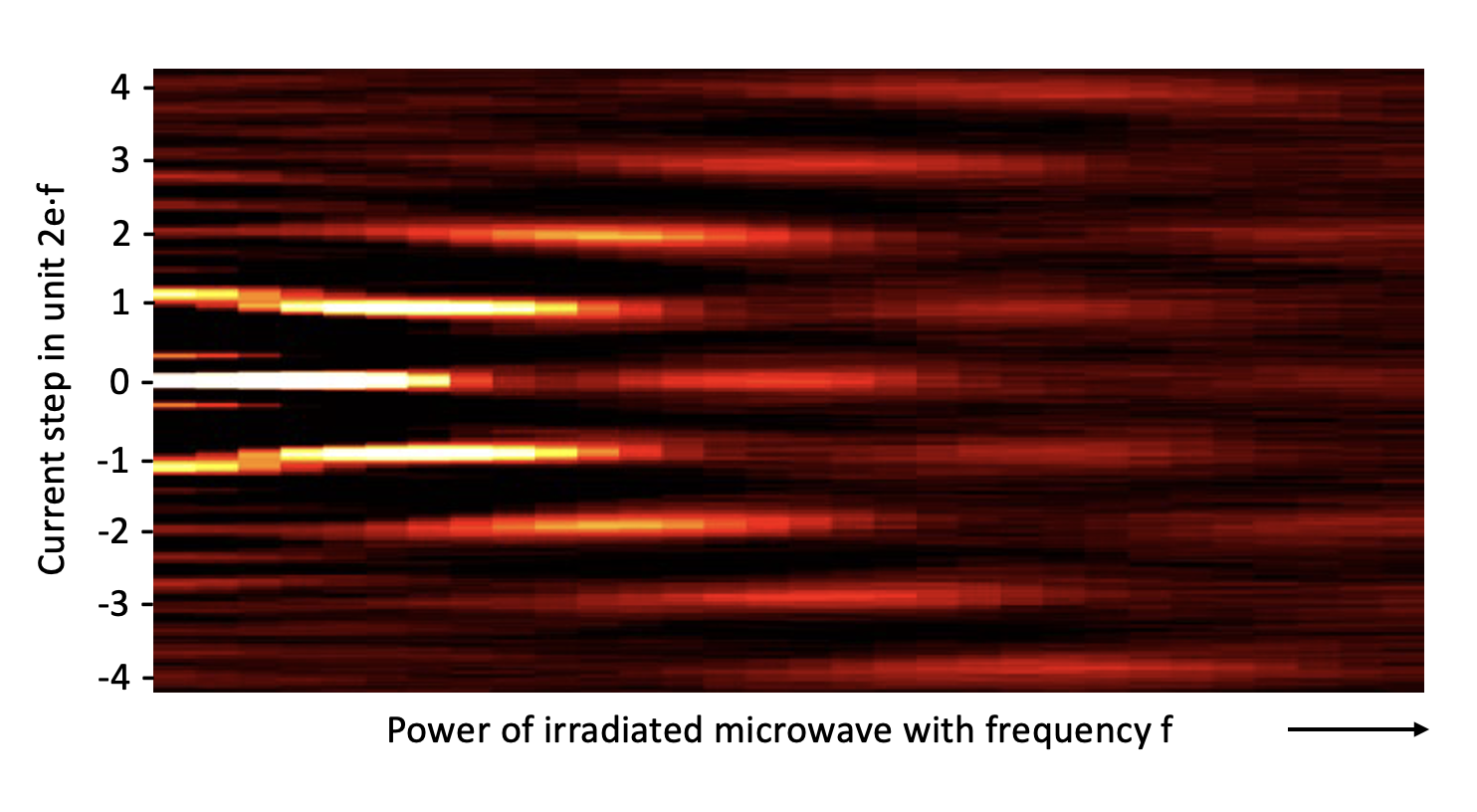- Home
- Technology Groups
- Competence Center for Micro- and Nanotechnologies
- Research results
- Quantized Current Steps Due to the a.c. Coherent Quantum Phase-Slip Effect
Quantized Current Steps Due to the a.c. Coherent Quantum Phase-Slip Effect

11.09.2023
The quantum mechanical tunneling of paired electrons existing in superconductors through an insulating barrier leads to the Josephson effects which enable various applications ranging from medical diagnostics using magnetoencephalography over new airborne methods for the detection of raw material deposits to voltage standards in metrology.
The complementary quantum mechanical phenomena, the so-called coherent quantum phase slip, although being theoretically described, has so far lacked a clear experimental confirmation. In the frame of a collaboration with international partners, the researchers achieved a breakthrough by a first-time demonstration of pronounced current steps in the current-voltage characteristics under microwave irradiation in a few nanometers wide niobium nitride structure, a so-called superconducting nanowire. These steps occur equidistant at current values of exactly
In = 2e∙f∙n, where 2e is the electric charge of an electron pair, f the frequency of the irradiated microwave in the Gigahertz range, and integer n denoting the step order. The current steps are caused by coherent tunneling of elementary magnetic flux quanta across the nanowire, resulting in a phase slip of the electron pairs’ wave function by 2π along the wire. The measurement data clearly proves the so far controversially discussed coherent quantum phase slip effect and at the same time demonstrates the principle of a future quantum standard for electric current.
This convincing experiment was enabled by the research and development of novel superconducting nanolayers out of niobium nitride with unique properties based on an optimized atomic layer deposition process at Leibniz IPHT. Such ultra-thin, highly-disordered superconducting material lays the foundation for a new generation of quantum technologies exploiting phase slip as well as high kinetic inductance. Examples are the realization of quantum computers and the completion of the quantum metrological triangle. Leibniz IPHT has thereby created a unique technology to be exploited in future research on quantum circuits for an application range that could surpass the one of the Josephson effects.
